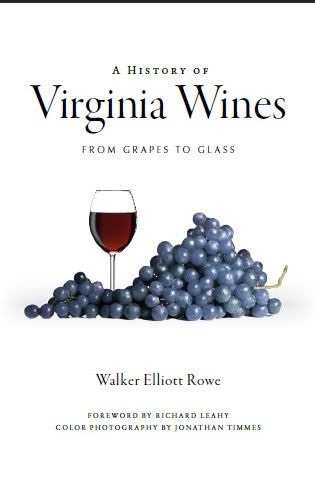Jay Hundley farms 6,000+ acres of soybeans and corn and he does it all with 6 people. As he explains it the only way to make money farming row crops is to grow your business, grow some more, and then grow again. Farming here in
The great majority of the soybeans and corns grown in the
The crops grown by most row crop farmers like Jay are called “Roundup Ready”. This means they have been engineered to tolerate this herbicide which was invented by Monsanto. Monsanto is the agribusiness organic farmers and environmental activists most love to hate. One reason for this is they have such a lock on the market as no other herbicide is so effective yet so gentle on the environment and people. Roundup is so popular in part because geneticists have figured out how to engineer plants so you can spray Roundup right on top of them killing all the weeds underneath yet the corn or soybeans are not affected.
Another kind of genetically engineered crop is called “BT”. A particular problem for corn growers is the European corn borer. This lepidoptera descends on the silks of the corn and then eats its way into the ear drilling holes in the kernel. It can also bore a hole in the stalk and make it fall over in the wind. So the scientists have bred seeds that include the bacteria bacillus thuringiensis or “BT”. This is a naturally occurring bacterium that the corn borer ingests and then the BT begins to eat the borer until it starves to death. One might think that this would make the organic growers happy who themselves use BT products like Dipel. Yet here is where the goals of the organic movement would appear to conflict with their tactics because BT seeds reduce pesticide use in the corn crop. Instead the activists exaggerate and say this corn plan produces its own “pesticides” invoking images of a plant which is dangerous to ingest for humans. But BT is perfectly safe for humans and has a zero preharvest waiting interval.
It would be unfair to target conventional farmers and say they are not friendly to the environment without looking at some of the issues they face. Certainly Jay loves the outdoors for he lives on a river where he can hunt ducks and play with his kids and his dogs. He says, “When I got out of high school all I wanted to do was farm.” Then he adds that criticism of GMO plants is without basis in fact and comes from people who are “afraid of change”. Echoing a refrain heard from conventional farmers he says, “Roundup Ready has cut the chemicals that we have to spray way down.” And as for soil erosion he practices no till farming.
Perhaps 20 years ago corn and soybean growers quit plowing their fields in favor of no till farming. This means they use the brush hog, the combine, or herbicides like paraquat to cut down the previous crop and then drill the seeds into what is left behind. This idea behind this is to keep soil erosion at a minimum. Bare soil, especially on a hill, is subject to erosion by wind or rain. Contrary to popular conception phosphorous does not leach into the ground water to pollute the bays and streams. It has a positive electrical charge so it clings to soil colloids which have a negative electrical charge. The reason that phosphorous could end up in the bays and rivers is soil erosion. So no till farming is one way to lessen this effect.
Another criticism levied at conventional farmers is that corn in particular requires lots of nitrogen. The most widely used source of nitrogen is produced using natural gas to force nitrogen out of the air. So it requires fuel which of course we get from such friendly and stable governments like
Some plants make their own nitrogen. These plants, like soybeans, clovers, vetch, and alfalfa fix nitrogen in the soil by taking it from the air. 80% of the air we breathe is nitrogen. So when farmers plant soybeans they are adding nitrogen to the soil without using up precious natural gas. This is main reason that most growers like Jay rotate their crops between soybeans and corn.
Jay farms corn, soybeans, wheat, and barley. Standing beside his $300,000 John Deere combine which uses GPS and moisture sensors to track its way across the field and decide what to harvest he says that he sells some seeds to Purdue, the poultry producer, just across the Potomac River in Maryland. “They will crush it and get the oil out of it and the meal.” Finally he also grows a little alfalfa which he bales and sells to horse owners.
Horses are not the only creatures that like alfalfa. Leaf hoppers will devour it wholesale so Jay sprays it with insecticides each times he cuts it. As for the remainder of his spray program he uses Roundup, obviously, and the decades old herbicide 2-4D. He says, “2-4D is better on some of the broadleaf weeds. Roundup is a little weak.” But 2-4D is a little too effective and can drift in the heat of the day onto bushes and trees and wound or kill them. Grape farmers are advised to warn their neighbors several hundred yards away not to use this powerful defoliant.
After growing corn and soybeans for the growing season Jay plans barley and wheat the first of October. It goes dormant in the winter and the starts to grow again in the spring. These cover crops help with soil erosion and to retain soil moisture.
Moisture is an issue for Jay as he shows me an irrigation system that slowly rotates across a 90 acre field. He cannot use this system everywhere he farms because in this rural corner of
I ask Jay about his fertilizer program. He says that he puts down lime every three years and takes soil samples every year. Nitrogen and fertilizers lower the PH so this is why it is necessary to continually add more lime. He says “If you don’t keep the PH right the plants cannot use the fertilizer.” He uses NPK fertilizers, obviously, but also pays attention to and corrects the level of manganese, zinc, and copper buying his fertilizer from Southern States whose local office also sells biodiesel fuels that he can use in his tractors, combines, and heavy trucks.
He says soybeans only need additional nitrogen early for the first crop of the spring which he calls “early beans”. These don’t start to fix nitrogen to the plant until there is a full canopy of leaves. Corn is planted in rows that are 30 inches apart and soybeans 15 inches where the liquid fertilizer is put down right beside the plant.
The other problems here are insects so he sprays for those when the damage they do is greater than the cost of the spray program. This is called “integrated pest management”. He says you have to be careful with your spray program because, “If we spray we kill beneficial insects too. [That] Can cause flare up of spider mites especially when hot and dry. We scout the field and we have a threshold before we spray. If you hit the threshold then it is beneficial for you to spray.” Another program is disease like anthracnose which lowers yields and rust. He says, “If soybean rusts hits your field you can lost 80% of your yield.”










No comments:
Post a Comment